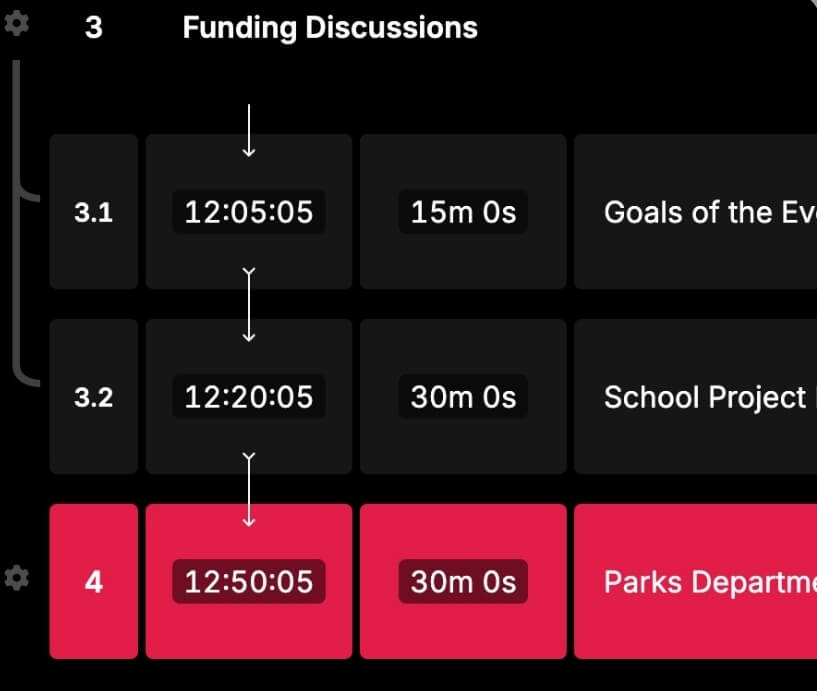How To Speed Up Your Rundown Building Process
• Erin Stevenson
Building rundowns can be a time-consuming and meticulous process, but with the right approach and tools, you can significantly speed it up without sacrificing quality.
Whether you’re coordinating a live event, broadcasting a sports match, or managing a conference schedule, there are various methods to streamline your workflow and save precious time. Here’s how to make the most of them:
1. Plan Your Sections in Advance
Efficient rundown building starts with good planning. Begin by outlining your event’s key segments on a timeline—identifying the major cues, transitions, and content blocks. With a clear picture of your event flow, This not only gives you an immediate overview of your structure but also highlights any potential gaps or redundancies that you might need to address early on.
When you group related segments together, you create a natural roadmap for your event. This method helps you prioritize the main elements first without getting bogged down by details like exact timings.
Once your structure is in place, you can then refine each segment, fine-tuning the timings and specifics with confidence. By using a grouping tool—like the intuitive grouping feature offered by Rundown Studio—you can easily segment your timeline into logical sections.
Pro Tip: Don’t worry about exact timings at first. Focus on getting the key cues and segments in place, and you can fine-tune timings once the structure is solid.

2. Share Early with Your Client or Team
The earlier you share your draft rundown with your client or team, the sooner you can get valuable feedback. It’s better to receive input before getting too deep into specifics—this way, you avoid wasting time on work that might end up changed or removed later.
Pro Tip: Set up a collaborative space where clients can leave comments or make suggestions directly in Rundown Studio.

3. Get Your Team Involved
Building a rundown doesn’t have to be a solo effort. Involve your team from the start, share the rundown & delegate tasks to make the process faster and more efficient. Rundown Studio’s collaboration tools make it easy for everyone to pitch in without stepping on each other’s toes.
Pro Tip: Assign roles within the platform to keep everyone clear on their responsibilities and avoid duplication of effort.
4. Utilize Templates and Pre-Saved Elements

One of the easiest ways to speed up your rundown creation is by leveraging templates and pre-saved elements. Rundown Studio allows you to create templates for different event types, which means you don’t have to start from scratch every time. Instead, select your template, make minor adjustments, and you’re ready to go!
Pro Tip: Customize your templates to match the specifics of different types of broadcasts or events. The more tailored your templates, the less work you’ll have later on.
5. Automate Repetitive Tasks
Identify tasks that can be automated and take advantage of Rundown Studio’s automation features. Set up automatic cue placements, segment numbering, and more to eliminate repetitive manual work. By letting the platform handle routine tasks, you free up time to focus on content and quality.

6. Organize and Categorize Segments
Having your segments well-organized makes the entire process smoother and faster. Create clear categories and naming conventions for groups, so finding and reusing content becomes effortless.

7. Stay on Top of Updates and New Features
Rundown Studio is continuously evolving to meet the needs of content creators and event managers, ensuring you always have the latest enhancements at your fingertips.
Stay informed by following our blog or subscribing to our newsletter, and use these strategies to streamline your rundown building process for more efficient event management.
Ready to transform your next event? Try our free trial today and experience the difference!